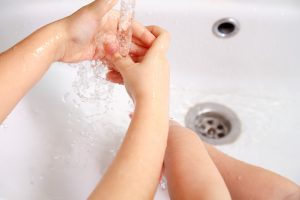
Saving big with little changes
October 21, 2016 | By Jon Gustafson
Professionals looking to boost water conservation often set their sights on the biggest — and often most expensive — water-using equipment in a facility. But while big-ticket items are an important part of overall conservation, there is a lot to be said for the role of the “little guy.”
Some simple upgrades or updates cost only a few dollars but save thousands in the long run.
According to the Environment and Climate Change Canada, Canada is the world’s second highest consumer of water per capita, following only the United States. The first step to reducing commercial water use is to understand how that water is being used in the first place.
A systematic look at water consumption, through an audit or other review process, can help operators get a clear look at usage and ways to reduce it. For example, a handwash sink without an aerator may be flowing at excessive rates, in some cases as high as 30 litres of water per minute, well above the standard flow rate.
Aerators, in fact, are one of the most commonly overlooked ways to reduce water consumption. Water savings multiplied over dozens or hundreds of sinks in a large facility can make a significant impact.
An aerator change or installation, which is inexpensive and simple to complete, can reduce water consumption by tens of thousands of litres and utility expenses by hundreds of dollars every year.
For example, in a facility with 40 hand washes per day, at 30 seconds per wash, switching from an 8.3 lpm aerator to 1.9 lpm saves more than 45,000 liters of water per year.
Aerators, which reduce the flow of water from faucets, are sometimes removed under the assumption that more water is better. Vandal-resistant aerators are recommended to prevent tampering and maintain the integrity of the product.
Plumbing advances mean the aerators available today can offer water flow lower than previous standard flow rates without diminishing performance. Lower-flow aerators can range from 5.6 lpm to 1.3 lpm.
With savings from water, sewer and energy costs to heat the water, the return on investment for aerators can be measured in days instead of years.
When considering this change, it is imperative to understand how a faucet is used on a day-to-day basis. Is it a simple restroom sink? Low flow will not diminish performance and will decrease water use.
In high use areas, proper selection of aerator flow rate is critical to ensure tasks can still be performed effectively. Going to the lowest possible flow rate available may not always be the right option for maintaining efficiency in the workplace.
There are facilities, notably healthcare, where aerators are not preferred due to concerns over bacterial contamination, but not using aerators can lead to increased water consumption.
In situations where laminar or non-aerated flow restrictors are required, other flow-restricting devices are available and can be used to reduce water usage.
Flow-control devices can be installed at the base of the faucet or spout to reduce annual water usage by up to 20 per cent. These types of controls are also inherently vandal resistant since they are installed inside the faucet body and are not easily accessible.
The key to capitalizing on this low-hanging fruit of water conservation is assessment. Many facility owners or operators may not be fully aware of their current water usage and existing issues, but a regular review of plumbing equipment should address some basic questions: How old is it? Is it functional? Are there leaks? Are better options available? Should it be replaced?
When excessive water usage is taken into account, plumbing products may be a larger contributor to water consumption than they appear.
Much as major building systems tend to undergo regular evaluation and maintenance, everyday plumbing fixtures should receive a periodic review of their status and functionality. With minimal expense and effort, there are plenty of savings to be realized in places other than the HVAC or energy systems.
Jon Gustafson is a regional sales manager for T&S Brass. He has more than a decade of experience in plumbing and is active in industry organizations and events.





